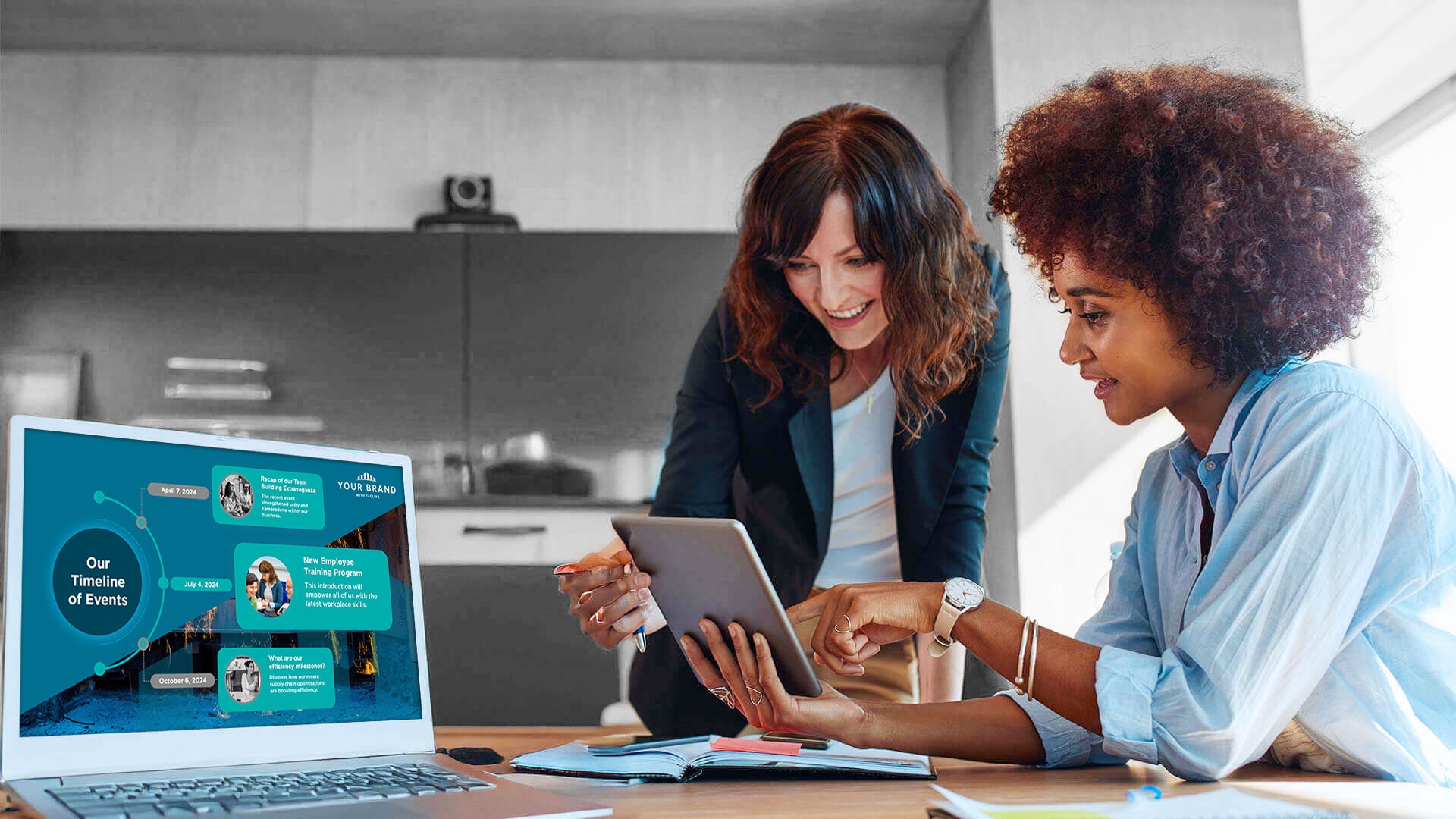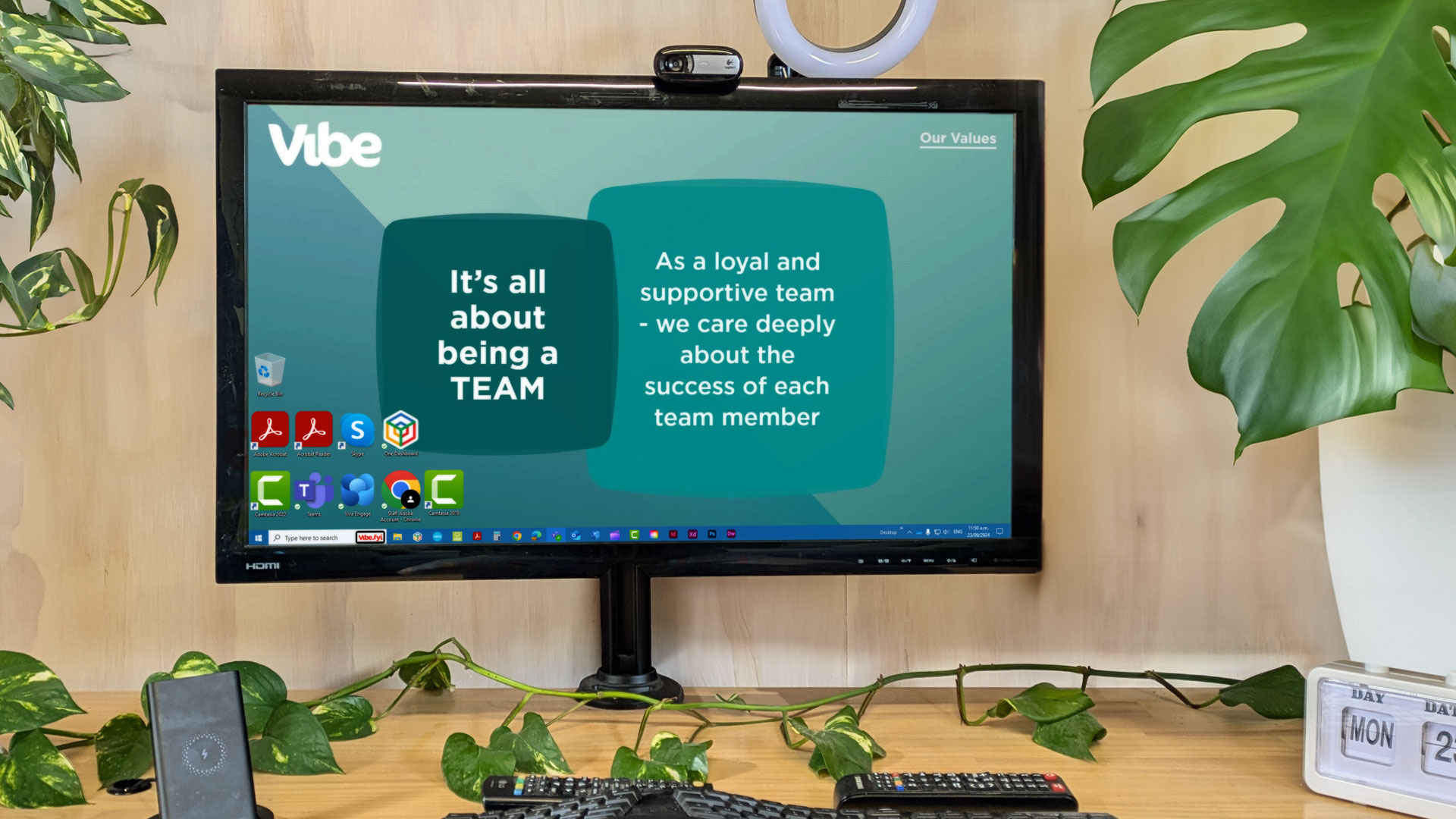Resources › The Future of Workplace Communication: Breaking Through the Digital Noise
In today’s digital-first world, internal communication teams face a paradox: Your people are inundated with messages yet remain disconnected from critical information. With overflowing inboxes, constant pings from Teams or Slack, and underutilised intranet platforms, organisations struggle to ensure that colleagues see, absorb, and act on key messages.
So, how can companies cut through the clutter and deliver messages that truly resonate? The future of workplace communication lies in rethinking
the delivery model—moving
beyond traditional channels and leveraging passive, high-frequency digital touchpoints to keep teams informed and
engaged.

The average people receives 120+ emails per day. Add to that the barrage of chat notifications, newsletters, and corporate updates, and it’s no surprise that engagement rates are dropping. People are tuning out, overwhelmed by an always-on flow of information.
This shift in digital behaviour means that traditional internal communication methods—email updates, intranet announcements, and even team meetings—are no longer enough. Important messages often get buried or ignored amid the daily flood of digital noise.
Traditionally, internal comms have relied on email, intranets, and meetings to deliver updates. But these channels are facing diminishing returns.
To reach people effectively, communication teams must adopt a multi-channel approach that integrates both active and passive touchpoints. While emails and chat platforms will always have a role, they should not be the only tools in the mix.
Instead, companies should leverage ‘glance media’—screens that people naturally encounter throughout their workday. This includes:
-
Screensavers and Lock Screens – Turn idle screens into high-impact communication tools, ensuring key updates are passively reinforced throughout the day.
-
Digital Signage – Keep high-traffic areas like break rooms, shared spaces, workshops, and meeting rooms visually engaging with key company messages—ensuring all teams, including non-desk and frontline workers, stay informed and connected.
-
Background Wallpapers – Subtle but persistent branding and culture reinforcement without disrupting workflow.
Instead of competing with emails and chat notifications, this approach works alongside them—ensuring employees absorb key messages
naturally as part of their workday.
Glance media works because it is high-frequency but low-effort. People don’t need to check their inbox or click a link; the message is simply there, consistently reinforcing key takeaways. For example:
-
Instead of sending multiple emails about cyber security awareness, a company can use the Lock Screen / Login Screen to reinforce security best practices and the Screensaver to drip-feed key security tips throughout the month—delivering the right message at the right time, in the right place.
-
Instead of relying on intranet engagement, HR teams can use digital signage to embed culture & wellbeing initiatives, DE&I programs, or upcoming events.
By embedding passive, high-visibility reinforcement tools into their internal comms strategy, organisations increase awareness without
adding to digital fatigue.
AI isn’t just a tool—it’s a shift in how information flows, decisions are made, and messages are crafted across the organisation. As AI platforms like Microsoft Copilot become embedded in daily workflows, the role of internal communicators is rapidly evolving from content creators to curators, strategists, and enablers of trust and alignment.
AI can automate repetitive tasks, generate first drafts, and even tailor messages to different audiences. But while AI may increase content volume and speed, it doesn’t guarantee that key messages land, resonate, or drive action.
That’s where internal comms teams step in—not just to oversee the content, but to orchestrate how and where it shows up. Passive channels like digital signage, screensavers, and lock screens become essential in this new landscape. They act as reinforcement layers, bringing AI-generated insights, training takeaways, or change communications back into view—without adding more to employees’ inboxes or calendars.
In an AI-driven workplace, the human touch remains vital:
- To decide what’s worth repeating
- To shape narratives that feel authentic
- To ensure technology enhances, not dilutes, human connection
AI may write the message—but internal comms ensures it’s seen, understood, and remembered.
As organisations continue shifting towards hybrid and asynchronous work models, communication strategies must evolve. Here’s what future-focused teams should prioritise:
-
Diversifying Communication Channels – Move beyond email and chat tools to include passive reinforcement strategies.
-
Leveraging AI for Smart Content Delivery – AI can help create personalised, data-driven internal comms that resonate with employees.
-
Reinforcing Key Messages Through Repetition – Behavioural science shows that ‘Spaced Repetition’, repetition spaced out over time, is key to long-term knowledge retention.
The future of workplace communication is not about increasing the volume of messages—it’s about improving the visibility and effectiveness of key communications. Organisations that embrace multi-touchpoint engagement will build stronger, more informed, and more connected workplaces.

Simply displaying content on screens isn’t enough. The real challenge lies in:
-
Making workplace communication engaging enough to grab attention.
-
Delivering messages in a way that sticks—without adding to digital fatigue.
That’s where Vibe comes in. We empower communication teams to:
-
Effortlessly create and share inspiring content.
-
Leverage spaced repetition to drip-feed messaging over time.
-
Ensure key messages are passively reinforced across multiple channels.
Want to see how this could work in your organisation? Contact us today and discover how Vibe can help you cut through the noise.
